Building a chemical reaction car is super easy! Fueled by vinegar and baking soda, these cars are fun to watch.

Chemical reactions with household products are really fun! There are so many that you can do that are super fun. You can make rockets with water and Alka-Seltzers. You can create elephant's toothpaste with hydrogen peroxide, liquid dish soap, and dry yeast. You can even drop Mentos into a Diet Coke for a geyser chemical reaction.
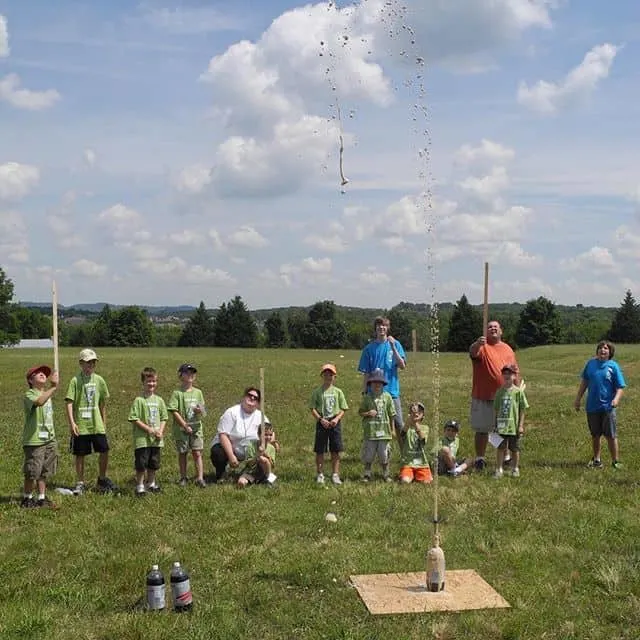
For this activity, we're going to use vinegar and baking soda. The chemical reaction that happens when those two combine makes carbon dioxide. We're going to use that chemical reaction to make a car move.
Supplies Needed for Chemical Reaction Car
Here's what you'll need:
- Baking Soda
- Vinegar
- Empty Plastic Bottle
- Single Ply Tissue
- Funnel
- Duct Tape
- Car
- Measuring Cup
- Measuring Spoon
- Paper & Pencil
You can use just about any type of car as long as you can duct tape the bottle to the top of the car. If you have Lego-loving kids, they can make a Lego car similar to this one. They can also build one with recycled materials like straws, skewers, and Gatorade bottle tops similar to this one.
But what's more perfect for Cub Scouts than a Pinewood Derby car? I had an extra kit, so I decided to use it. We didn't cut or paint the car–we just added the wheels and taped the bottle onto the top of the wooden block.
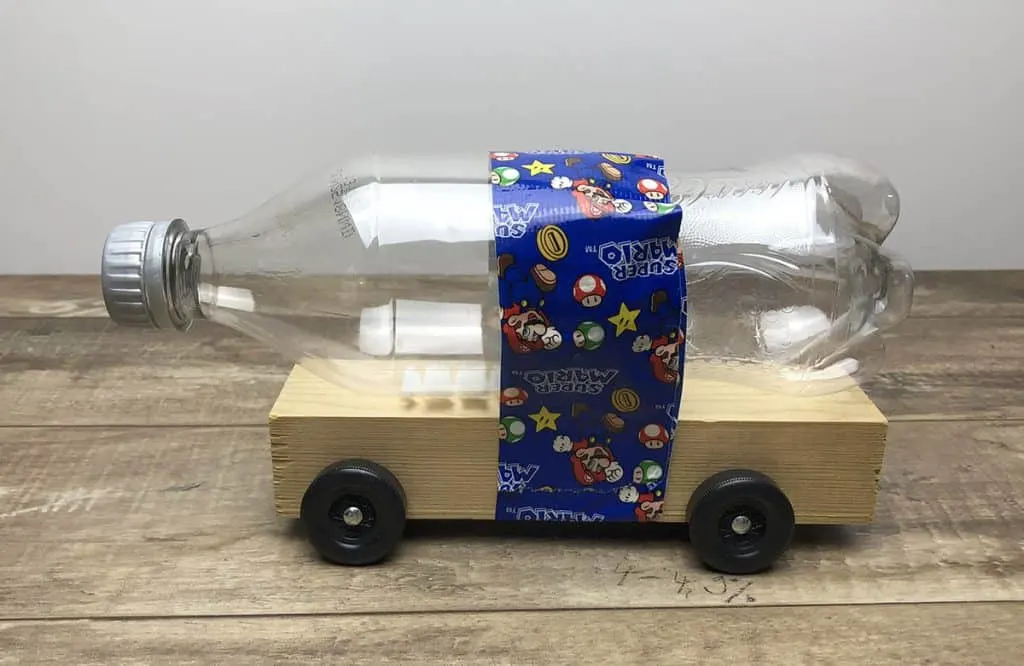
When you attach the wheels, you don’t push the nails in too far. There needs to be a little bit of room between the wheel and the body of the car so that the wheel will turn.
Instructions for Chemical Reaction Car
Here’s what you do:
Rinse out the bottle, and let it dry. Tape it to the car with duct tape. The opening of the bottle should be facing the back of the car.
Use a hammer and nail to poke a hole in the bottle cap. This was a little hard to do, so it probably makes sense for an adult to do this. Another possibility is to drill the hole with a small electric drill.
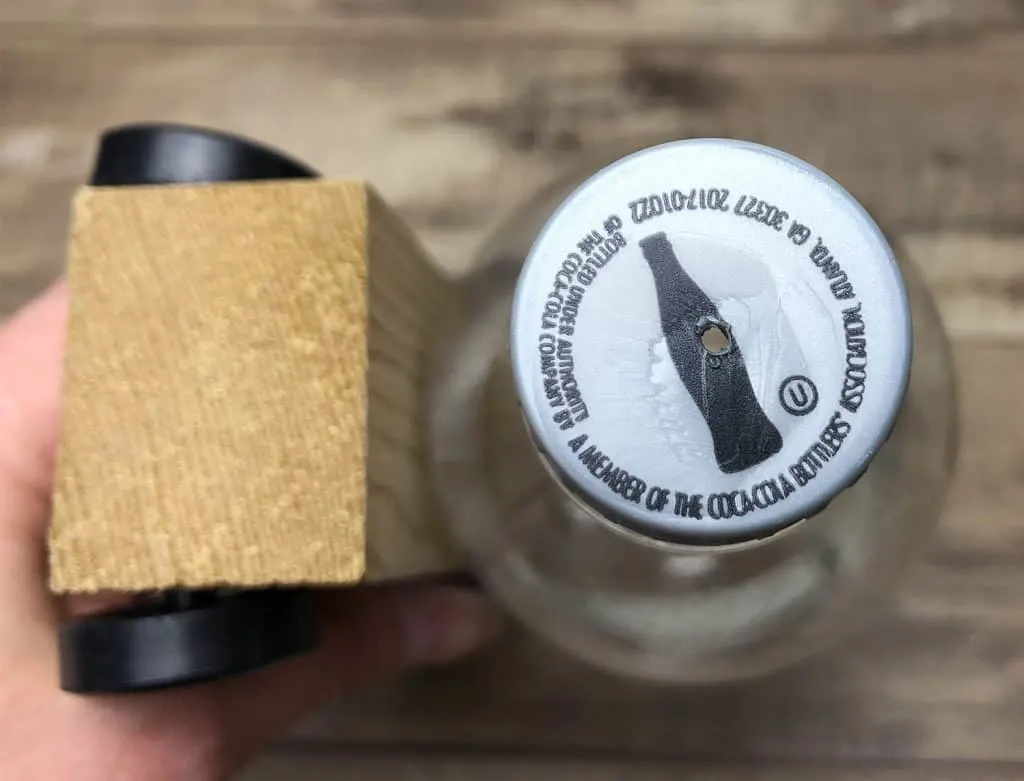
Most tissues have several layers of paper, so you'll need to separate the tissue so that you have only one layer. Pour your baking soda onto the tissue, and roll it up.
If you pour it into a pile and gather the tissue around the baking soda, you'll have something that looks like a pouch. It'll be hard to push the pouch into the bottle without ripping the tissue.
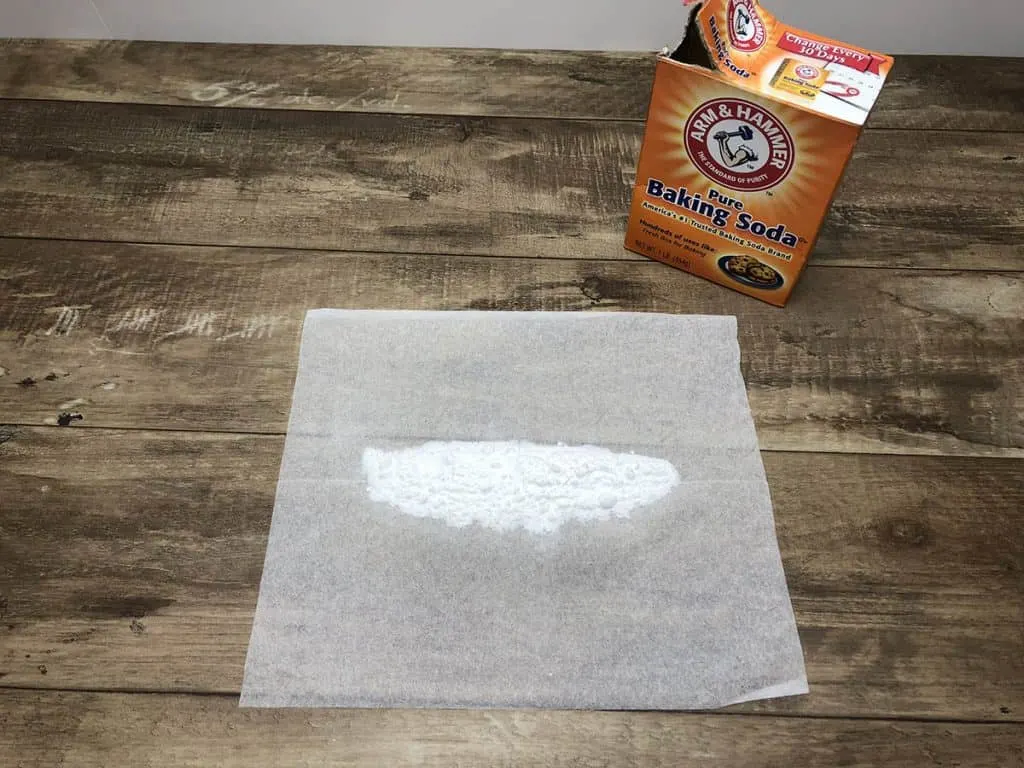
It's better to pour the baking soda into a row or a line, then roll up the tissue. It'll look kind of like a log. That will be much easier to get into the bottle.
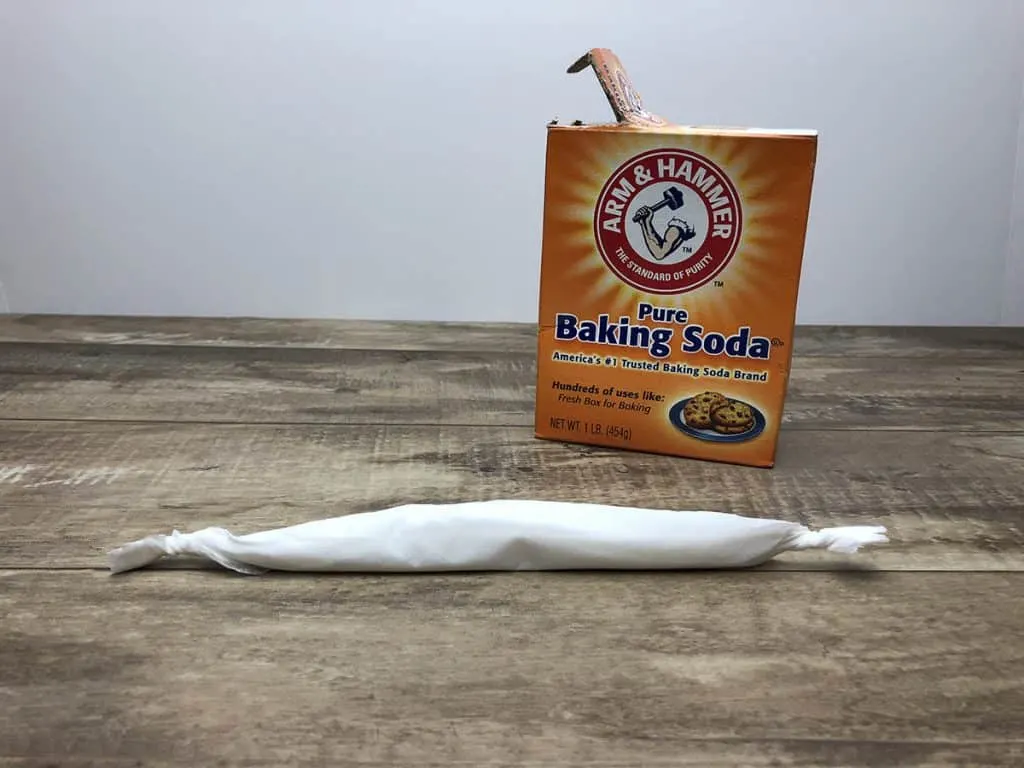
After you've created your baking soda pouch, set it aside.
Have a Cub Scout hold the bottle while a second Scout fills it about half or two-thirds full of vinegar.
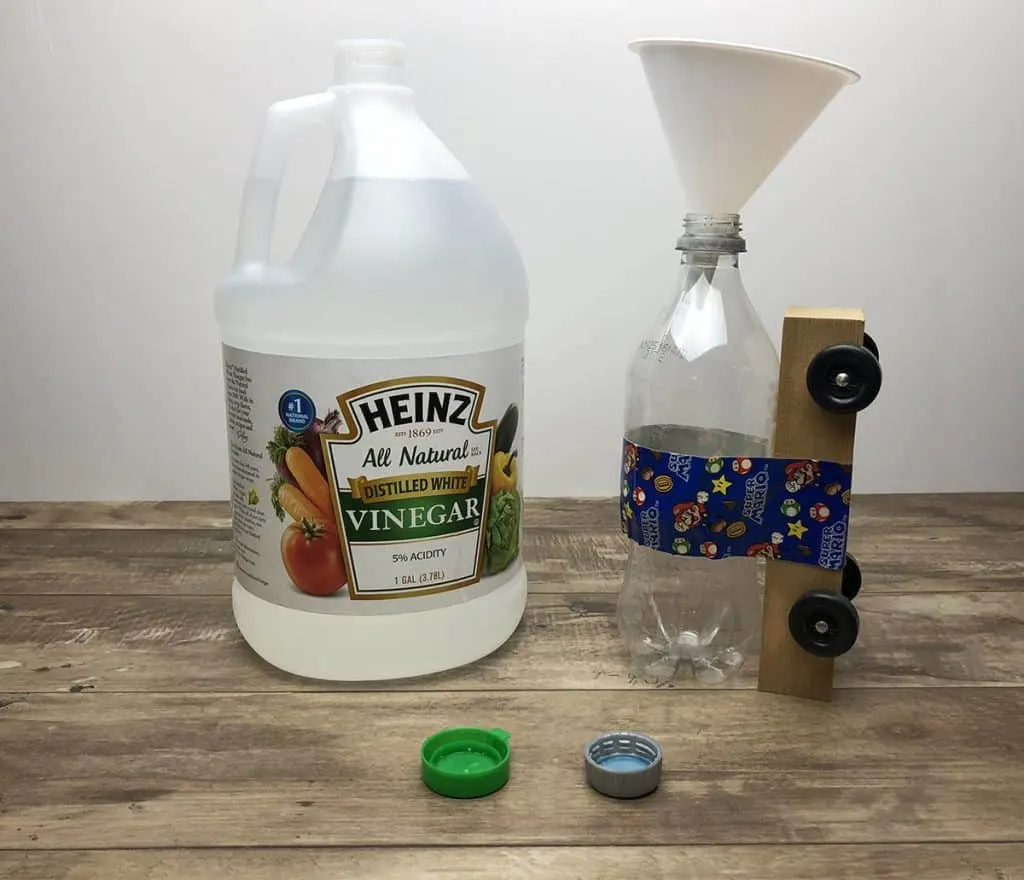
Next, carefully push the baking soda-filled tissue down into the bottle. Quickly screw the lid on tightly, and hold your finger over the hole in the bottle cap.
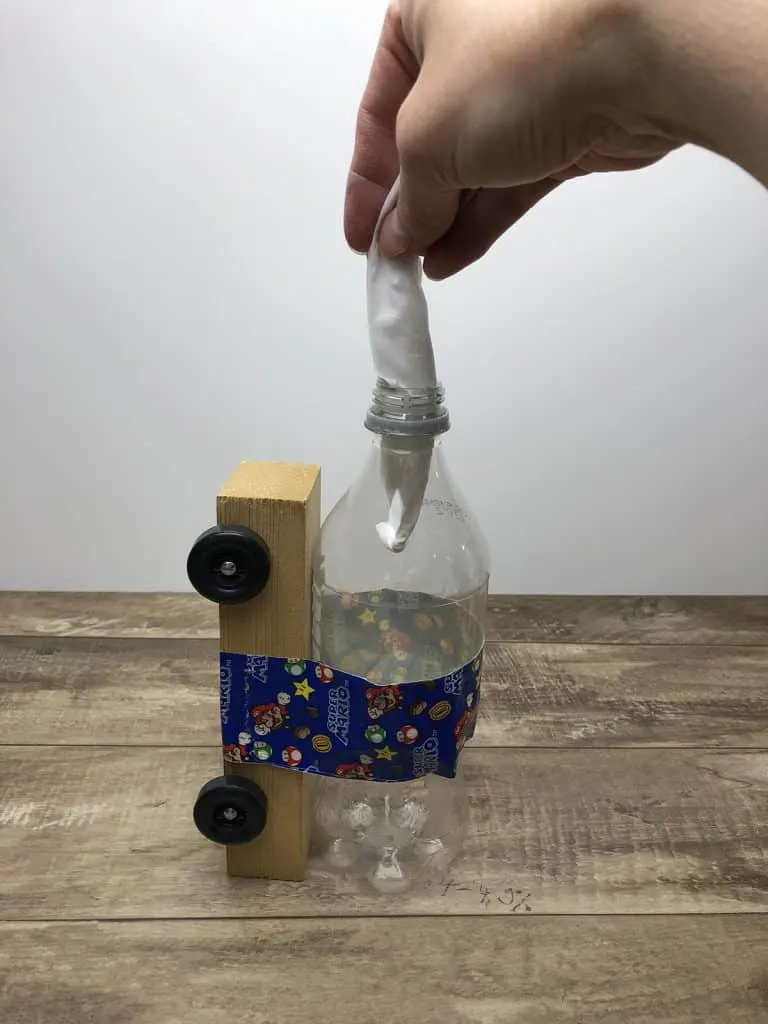
Gently rock the bottle back and forth so that the tissue disintegrates, and the baking soda and vinegar can combine.
Wait a few seconds so that the carbon dioxide can build up. Keep your finger tightly pressed over the hole.
Next, put your car down on the ground, and remove your finger. Watch your car go flying down the street!
Your Cub Scout can record how much vinegar and baking soda they used and how far the car went. They should do the demonstration two or three times, varying the amounts of vinegar and baking soda they use each time. Make sure they record the amounts and distances for each try.
Our Mistakes
We had several failed attempts at getting our car to go. Here are some of the things that we did that were unsuccessful.
- We didn’t put enough vinegar in the bottle.
- We didn’t put enough baking soda in the bottle.
- We didn't give the chemical reaction enough time to happen before I removed my finger.
I will admit that it was pretty funny when I put the car down expecting it to go a long way, and it only moved a few inches! 🙂
Let me know how far your chemical reaction car goes!
Yours in Scouting,
Sherry



The Ultimate Guide to How and Why to Interlink Blog Posts ~ Easy Blog School
Thursday 22nd of July 2021
[…] bicarbonate (which is baking soda), and citric acid. When they are dropped into water, a chemical reaction takes place, and bubbles of carbon dioxide gas are […]
How to Make Alka Seltzer Rockets with Film Canisters
Saturday 19th of June 2021
[…] sodium bicarbonate (which is baking soda), and citric acid. When they are dropped into water, a chemical reaction takes place, and bubbles of carbon dioxide gas are […]
How to Make a Paper Airplane for Cub Scouts
Sunday 17th of January 2021
[…] In this adventure, the kids learn about propulsion by making paper airplanes, model boats, and self-powered cars. […]
Dana
Thursday 6th of February 2020
Is the tissue required for this a kleenex tissue or the kind of tissue sold with wrapping paper?
Sherry Smothermon-Short
Monday 10th of February 2020
A kleenex tissue. Sorry it wasn't clear!
How to Host a Cub Scout Rocket Academy | Cub Scout Ideas
Thursday 15th of August 2019
[…] wrote about another vinegar and baking soda activity, the chemical reaction car. It’s the same concept, but a car rather than a rocket. […]